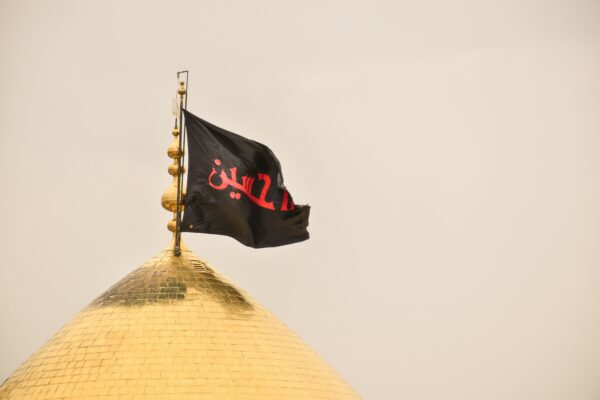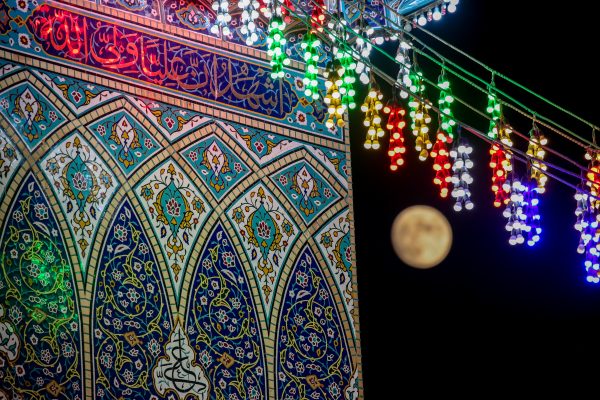In light of the recent attacks in Baghdad, Syria, Turkey, Lebanon and the Arabian Peninsula, we began to witness a reoccurring trend of mourning emoted from Muslims on Twitter and other social media platforms. This only reflected what Muslim groups have long felt behind closed doors however, like plenty of Muslim matters, this too is drowned in sectarianism.
Recently, there were suicide attacks in the cities mentioned above. To outsiders, they appeared the same: ISIS had attacked Muslims. And on the illusory periphery, that vantage point is correct, but the details were immensely more perverted. After all, not all ISIS attacks are the same and neither are all Muslims.
After the Invasion of the Iraq, the Americans and rest of the Gulf worked to sectarianize the Muslim world actualizing the prophecy of satanic political plotter, Henry Kissinger: the hundred year Sunni-Shia war. The Sunnis in Iraq now had to get used to Shias, who used to serve them tea and serve as the filling for mass graves, tread the halls of power reserved for them and them alone. They had to deal with a Shia Majority coming into power and expressing a Shia narrative. The destruction of a blood-drenched tyrant who had murdered Shia’s ruthlessly was the first part of this narrative. Coming into their own and inheriting Iraqi governance and thus agency, was the second.
Institutional Sunni supremacy was now a bygone thing and in its void rose Sunni rejection up against Shia retaliation and forced identity. With Shias now controlling Iraq, the country was now labeled as “Shia dominant.” The same McCarthyism takes place today when it comes the Popular Mobilization Units Leading the fight against ISIS. They are labeled Shia Militias and Iranian proxies, regardless of them being under government control and involving an array of demographics. To cap off the stigma associated with Shias in Iraq is the fact that they are viewed as American collaborators. In the MENA, the general view is that those who collaborate are opportunists who have sold themselves to American economic interests in their country. The Iraqi Shia have betrayed their Sunni brothers and did not resist the American invasion. On top of the McCarthyism, they were the scapegoats for Iraq’s invasion and consequential destruction. This is the Sunni view of Iraqi Shias and Shias in general.
Here we won’t be going over how the Iraq Invasion has triggered the regression of the American empire in the Middle East; the reason I mention the Iraq war and the McCarthyism associated with it is so we can get a better glimpse into the Muslim psyche and how it affects mourning in the Muslim world.
A car bomb that goes of in Iraq killing 300+ people is not remotely the same as a blast or suicide bomber that goes off in a Turkish airport or the mosque of the Prophet. Iraq is not viewed simply as Iraq: it is viewed as Shia Iraq. An attack on Iraq is viewed as an acceptable and encouraged one. The decision of the Shia in Iraq to enter political settlements with the Americans while Shia militants on the ground were muscling the Americans for a better position at the negotiation table went over the heads of Sunnis: all that was seen was the cooperation.
What this did was legitimize all attacks that would take place. After all, they were attacks on Shias and their rejected Shia government. The obvious sect-centric politics, which has been more than mainstreamed and embedded, has also trickled down and found its way to public mourning on social media. Statements of mourning may seem like just that when looked at by an outsider, but anyone conscious of political and religious alignments can see their sectarian nature.
The first case we have is that of Mufti Menk.
In between the attack on Turkey (June 28, 2016) and the attack on the mosque of the Prophet (July 4, 2016), the attack in Iraq (July 3, 2016) took place. And while he mourned the attack in Turkey and Saudi Arabia, we can see absence of mourning that occurred when the attack in Iraq took place. Many correctly categorize this as selective humanity. But more than that, it is selective humanity drowned in sectarianism producing sect-coded mourning.
When a scholar mourns Turkey’s attack but not that of Iraq, he is mourning the death of what has been portrayed to the world as Sunnis in a Sunni majority country which has goals that are aligned with Sunni Islam’s past, present and future trajectory. As Turkey’s president has been seen as the de facto leader of the Muslim Brotherhood on an international scale, the masses have flocked to him as the protector and reviver of Sunni Islam. His support for the Brotherhood as they try and enforce their political agendas in Egypt and Syria, and as he makes Turkey a Salafi bastion to aid them in their goals, has created a caliphic image of him. He allows Salafi scholars to roam freely while he nurtures them and in turn they legitimize his leadership. His state, Turkey, is legitimate as it caters to the Sunni narrative while simultaneously using Sunni victimhood as a means of intervening in the rest of the MENA.
Fanar Hadad claims that the Sunnis in Iraq began rejecting the American cooperating Shia centric state viewing it as illegitimate, while viewing Saddam’s Baathist government as legitimate. The Shia in Iraq are the polar opposite, viewing Saddam’s government as illegitimate while the current government as legitimate. This legitimacy is the crux: it regulates the humanity of the “activist” or speaker and whom he/she thinks is worthy of mourning.
“Perhaps the simplest way to understand a sectarian environment such as post-2003 Iraq is to view it as one that encourages sect coding. In such an environment, sectarian identity attains an outsized ability to influence people’s social and political perceptions. As a result, significant actors and events rarely escape sectarian labeling: a political dispute becomes a sectarian dispute, a policy becomes a sectarian policy, a demonstration is invariably labeled a Sunni or Shia one, and so forth.
This was aptly illustrated in late 2012 when then prime minister Nouri al-Maliki moved against two public figures in short succession: governor of the Central Bank Sinan al-Shibeebi and then vice president Tariq al-Hashimi. The former is a fellow Shia and hence Maliki’s attack against him was perceived as a power move aimed at consolidating the prime minister’s grip on power; the latter, however, is Sunni, which immediately lent the episode an unavoidable sectarian dimension in popular perceptions. As is inherently the case in a sectarian environment, political disputes cannot escape sect coding so long as the protagonists are of different sectarian backgrounds.”
This excerpt from Hadad’s paper explains to us the meaning of sect coding. His definition revolves around the perception of political actions received and interpreted by a plethora of entities. Although I have borrowed the phrase, what I mean by it is that the public figures that mourn terrorist attacks code their statements making them implicitly sectarian. While Hadad’s subjects are on the receiving and interpreting end, mine are on the interpretation, statement and sentiment-producing end. My objects of study have their subjects and followers who become the receivers and readers that Hadad alludes to.
In today’s politically correct hyper-humanitarian world (wait until the end of the sentence) a scholar wouldn’t sleep the night if he implied that a group of innocent people deserved to be blown to pieces because of their apparent religio-political alignment. The escape route for such scholars is silence. This is not the silence of a mourner seeking seclusion for the passing of his beloved. It is one of satisfaction. It is one of sanctioning.
Sect-coded mourning is ultimately a combination sect-driven lamentation and silence. Every environment, even statements of grief have become sectarian. The issue of silence might be trickier. How do we know its intent and purpose? We get our answer in that after the speaker mourns a “Sunni country,” he will keep quiet for a “Shia state,” and then quickly speak up again for the next “Sunni country.” A recent analogy would be “all/blue lives matter,” rising up as a response to “Black lives matter.” Both are statements that coincide with the preservation of a specific race, while antagonizing the other. The former statement has an implicit target. Other than the silence being riddled with sectarianism, it helps facilitate the erasure of Shia suffering, ultimately effacing the Shias themselves.
Mourning through Shia Suffering does this: by seeing no suffering when looking in that direction. To not see the bloodiest and loudest forms of persecution, and those that disappear, helps ease their non-existence, along with the gruesome means by which they disappear. Ultimately, once the slaughter is complete, this greases the wheels for putting on the most absolute front that they never existed. This is their ideal world in which Shias don’t, shouldn’t, and are on their way to not existing. When challenged about his sect-coded mourning by Allama al-Hilli, Mufti Menk’s silence reigned once more.
Of course, it should come as no surprise that a Salafi scholar whose ideology is responsible for Shia suffering is quiet when such explosions take place; he continues in spreading the ideology and keeping quiet for it’s crimes.
The original and more extended piece can be found here.
by Mohammed Fares





